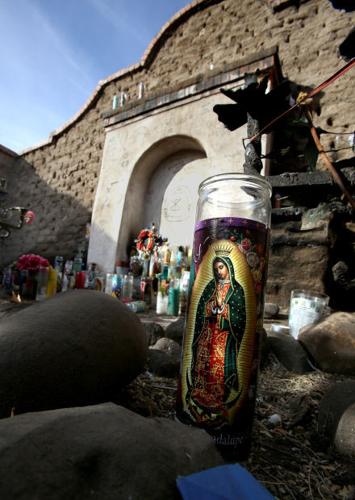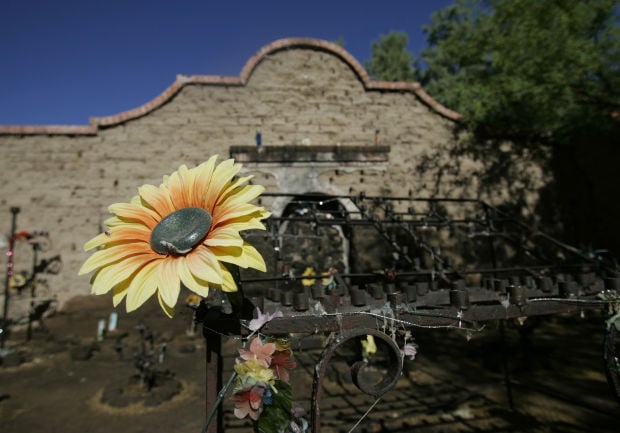In the 1960s, a large chunk of what had been downtown Tucson was swallowed up by a huge Urban Renewal project. Old businesses and residential neighborhoods were cleared to make was for public buildings like the Convention Center.
This left a sour taste in the mouths of many who had been displaced from their traditional barrio homes, and prepared the way for a new battle which was to begin in 1971.
In that year, a new project — the Butterfield Parkway — was proposed which would cut through the remaining downtown neighborhoods. The residents of those neighborhoods decided to try to stop the project — to “fight City Hall,” in fact.
They organized protest meetings and tried to get public opinion on their side. One tactic they used was to get El Tiradito placed on the National Register of Historic Places. This was accomplished with the help of Dr. Byrd Howell Granger, my predecessor as a folklorist at the University of Arizona.
This accounts for the rather odd wording on the historic plaque: “The only shrine in the United States dedicated to the soul of a sinner buried in unconsecrated ground.” In those days, to get on the register a site had to be unique. Now that quality is less important.
The game was now changed in several important ways. You don’t just plop a major artery down on top of a national historic site, for openers.
In addition, when the shrine became a symbol of ethnic identity, the Catholic church needed to recognize a religious site which it had hitherto ignored as a popular superstition. Masses were said at the shrine for the first time, and El Tiradito gained a certain amount of respectability.
And the Butterfield Parkway project fizzled and died.
Within the last few years, El Tiradito has become the destination for marches protesting the rising number of deaths suffered by border crossers in the Sonoran Desert. Marchers carry small white crosses representing the individual victims, and leave them at the shrine. And so the site evolves and grows to reflect the changing times.
El Tiradito is truly a site of many uses. A place to tell a good story to visitors, a place to access power, a symbol of Tucson’s history and traditions. It is very much a living shrine, serving many needs in an increasingly complex community.
And the candles still burn in front of the wall, and little notes of petition are still thrust between the adobes.







